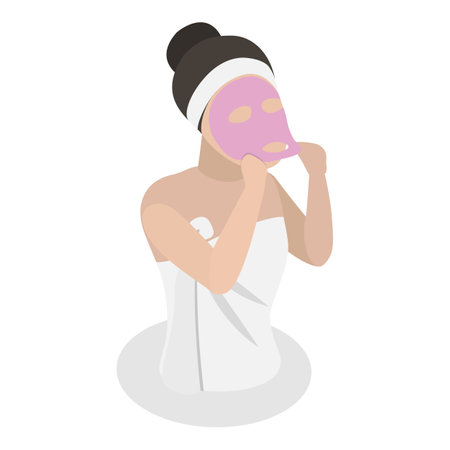Understanding Cracked Heels
Cracked heels, medically known as heel fissures, are a common foot complaint across the UK, especially during colder months and periods of low humidity. These painful splits in the skin can range from mild cosmetic concerns to severe fissures that bleed or become infected. Understanding the underlying causes is crucial for effective prevention and treatment. In Britain, factors such as frequent exposure to wet weather, central heating during winter, and a preference for open-backed shoes in summer all contribute to dry, callused skin on the feet. Additionally, the UKs varied climate means many people experience both dry indoor air and damp outdoor conditions, which can exacerbate skin dehydration.
Common Causes of Cracked Heels in the UK
| Cause | Description |
|---|---|
| Dry Weather & Central Heating | Lack of moisture strips natural oils from skin, leading to dryness. |
| Standing for Long Periods | Puts excess pressure on heels, causing skin to split. |
| Poorly Fitting Shoes | Open-backed or unsupportive footwear allows heels to expand and crack. |
| Aging Skin | Natural loss of elasticity makes older adults more susceptible. |
| Certain Health Conditions | Diabetes, obesity, and eczema increase risk due to compromised skin health. |
Who Is Most at Risk?
- Older adults – reduced skin elasticity and slower cell turnover make them more prone to cracks.
- People with active lifestyles – runners or those who walk long distances often suffer from heel pressure and friction.
- Individuals with certain medical conditions – diabetes, thyroid disorders, and obesity can compromise circulation or skin integrity.
If you find yourself frequently dealing with rough, splitting heels, you’re certainly not alone. Recognising these risk factors is the first step towards choosing the best remedy suited for your needs in the UK climate and lifestyle.
Top Over-the-Counter Products Available in the UK
When it comes to treating cracked heels, British pharmacies are well-stocked with a variety of over-the-counter remedies. From intensive foot creams to soothing balms and targeted ointments, these products are designed to deliver visible results, often within days. In this section, we’ll take a detailed look at some of the most popular solutions available across the UK high street and online, breaking down their active ingredients and sharing real user experiences.
Popular Cracked Heel Treatments in British Pharmacies
| Product Name | Main Ingredients | Key Benefits | User Feedback |
|---|---|---|---|
| Flexitol Heel Balm | Urea (25%), Shea Butter, Lanolin | Deep hydration, visible improvement in 1-3 days, recommended by podiatrists | Highly rated for rapid results and non-greasy formula; many users note significant softening overnight |
| Scholl Cracked Heel Repair Cream | Keratolytic agents (urea), Eucalyptus oil | Targets tough skin, smooths rough patches, easy-to-use tube | Praises for quick absorption; some mention mild tingling sensation but effective on deep cracks |
| Eucerin Advanced Repair Foot Cream | Ceramides, Urea (10%) | Replenishes moisture barrier, suitable for sensitive skin, fragrance-free option available | Loved for gentle formula; ideal for those prone to irritation or eczema on feet |
| O’Keeffe’s Healthy Feet Cream | Glycerin, Allantoin, Paraffin Wax | Forms protective barrier, intensely moisturising, non-greasy finish | Noted for dramatic difference after a week of use; favoured by those on their feet all day |
| Lush Fair Trade Foot Lotion | Murumuru Butter, Arnica Infusion, Peppermint Oil | Cruelty-free, invigorating scent, soothing tired feet alongside repairing cracks | Fans love its ethical credentials and cooling feel; best for milder heel dryness rather than deep fissures |
What Makes These Products Effective?
The mainstay ingredients across these British favourites include urea—a powerful humectant that draws moisture into the skin—alongside nourishing butters and oils to lock in hydration. Many also contain keratolytic agents that gently exfoliate dead skin cells, helping to smooth rough patches without harsh scrubbing. Texture-wise, British consumers tend to favour fast-absorbing formulas that don’t leave an oily residue on socks or bedsheets.
User Experiences: Real Results from Across the UK
User reviews consistently highlight the importance of daily application for optimal results. Several customers recommend applying your chosen product after a warm bath or shower when the skin is softer and more receptive. For those dealing with stubborn cracks or very dry heels, wearing cotton socks overnight after application can intensify the effects and speed up healing. Overall, while preferences vary based on scent and texture, the above treatments stand out for their proven effectiveness and accessibility throughout the UK.

3. Home Remedies that Actually Work
When it comes to treating cracked heels, many Britons turn to tried-and-true home remedies before seeking out more advanced treatments. Below, we analyse some of the most popular traditional and household solutions frequently tested in UK homes, offering practical advice tailored to the British lifestyle.
Popular Home Remedies: Do They Deliver?
| Remedy | How it Works | Effectiveness (UK Experiences) | Practical Tips |
|---|---|---|---|
| Warm Water & Salt Soak | Softens hard skin and reduces soreness by loosening dry patches. | Moderate—A common evening ritual especially in colder months. | Add a few drops of tea tree oil for antibacterial benefits; soak for 15-20 minutes. |
| Pumice Stone Exfoliation | Physically removes dead skin after soaking. | High—Frequently used post-bath or shower. | Use gentle circular motions; avoid over-exfoliating sensitive areas. |
| Coconut Oil Application | Moisurises and seals cracks overnight due to its emollient properties. | Good—Favoured during winter; absorbs well under cotton socks. | Apply generously at bedtime and wear socks for best results. |
| Petroleum Jelly (Vaseline) | Locks in moisture and creates a protective barrier against further cracking. | Very High—Widely recommended by NHS nurses and GPs alike. | Combine with thick socks for overnight treatment; ideal for severe cracks. |
| Lemon Juice Scrub | The mild acidity helps exfoliate dead skin while providing vitamin C boost. | Mixed—Effective but may sting if cracks are deep. | Dilute with water; avoid on open or bleeding cracks. |
Bespoke Advice for British Homes
Many households in the UK have central heating, which can dry out the air and exacerbate cracked heels. Incorporating a nightly foot care routine is not only practical but necessary during colder months. Consider keeping a small kit by your bedside including a moisturising cream, a pair of cotton socks, and a pumice stone for easy access. For those who enjoy gardening or regular walks in wellies, make sure to clean and moisturise feet thoroughly after outdoor activities to prevent dirt from settling into cracks.
When to Seek Professional Help?
If home remedies fail to show improvement after two weeks, or if you notice bleeding, persistent pain, or signs of infection, consult your local GP or podiatrist. While these household treatments are effective for mild cases, deeper fissures may require specialist care available through the NHS or private clinics across the UK.
Summary Table: Best Use Scenarios
| Scenario | Recommended Remedy |
|---|---|
| Mild Dryness | Coconut Oil or Petroleum Jelly Overnight |
| Tough Calluses Post-Gardening | Pumice Stone Exfoliation Followed by Moisturiser |
| Sensitive Skin or Allergies | Mild Soap Soak + Fragrance-Free Moisturiser |
This blend of time-honoured home remedies and practical advice ensures that even those with the busiest British lifestyles can manage cracked heels effectively from the comfort of their own home.
Professional Treatments and When to See a Specialist
If home remedies and over-the-counter products have failed to improve your cracked heels, it may be time to consider professional help. In the UK, podiatrists (also known as chiropodists) are qualified specialists who can assess and treat a wide range of foot problems, including severely cracked heels. Seeking professional treatment ensures that you receive expert advice tailored to your condition and helps prevent complications such as infections.
What to Expect from Podiatry Services in the UK
Visiting a podiatrist is straightforward, with most clinics offering a comprehensive assessment followed by targeted treatments. Here’s what typically happens during an appointment:
| Step | What Happens |
|---|---|
| Assessment | The podiatrist examines your feet, asks about your medical history, lifestyle, and any underlying health conditions that may contribute to cracked heels. |
| Treatment Plan | A bespoke plan is created, which may include debridement (removal of thickened skin), moisturising treatments, and advice on footwear or orthotic supports. |
| Professional Procedures | Pain-free removal of hard skin using sterilised tools, application of medical-grade emollients or dressings, and in some cases prescription-only creams for persistent cases. |
| Aftercare Advice | Guidance on how to care for your feet at home, including recommended products available in UK pharmacies and tips on preventing recurrence. |
When Should You See a Specialist?
- Persistent Cracks: If cracks do not improve after several weeks of home treatment.
- Pain or Bleeding: If walking becomes painful or if you notice bleeding or signs of infection (redness, swelling, discharge).
- Underlying Health Issues: Those with diabetes, poor circulation, or immune system problems should seek prompt specialist care at the first sign of cracked skin.
- Recurring Problems: Frequent episodes of cracked heels may signal biomechanical issues or unsuitable footwear that require professional assessment.
NHS vs Private Podiatry Services: What’s Available?
| Service Type | NHS Podiatry | Private Podiatry |
|---|---|---|
| Availability | Limited; generally for high-risk patients (e.g., diabetics) | Widespread; appointments often available within days |
| Cost | Free (if eligible) | £35–£70 per session (average) |
| Treatment Scope | Mainly essential care and prevention for vulnerable groups | Bespoke treatments for all levels of severity and ongoing support |
| Referral Needed? | Usually via GP referral | No referral required; book directly with clinic |
Your Next Steps for Healthier Heels
If you’re struggling with cracked heels despite trying various remedies, booking an appointment with a UK-registered podiatrist could be the key to long-term relief. Remember: early intervention not only soothes discomfort but also helps protect your overall foot health.
5. Preventative Measures Tailored for British Weather
Living in the UK means contending with a unique mix of damp, chilly winters and unpredictable rainy spells, all of which can wreak havoc on your skin—especially your heels. Prevention is always better than cure, so here are practical tips, specifically designed for British routines and weather patterns, to help you avoid cracked heels in the first place.
Moisturising Habits Suited to the UK Climate
The combination of central heating indoors and cold, wet conditions outdoors can strip your skin of moisture. Adopting a regular moisturising routine is essential:
| Time of Day | Recommended Action | Product Type (UK Favourites) |
|---|---|---|
| Morning | Apply a rich foot cream before putting on socks; opt for quick-absorbing formulas to avoid slipperiness | Cetraben Cream, Flexitol Heel Balm |
| After Showering | Pat feet dry thoroughly, especially between toes; apply hydrating lotion straight after showering to lock in moisture | E45 Moisturising Lotion, Aveeno Daily Moisturising Lotion |
| Bedtime | Use an intensive overnight foot mask or thick balm; wear cotton socks for deeper absorption | L’Occitane Shea Butter Foot Cream, CCS Foot Care Cream |
Footwear Choices for Rainy Days and Cold Snaps
The right footwear plays a crucial role in preventing cracked heels. In the UK, where rain is frequent and temperatures fluctuate, consider these tips:
- Waterproof shoes or boots: Essential for keeping feet dry during wet commutes or countryside walks.
- Socks made from natural fibres: Cotton or wool socks allow skin to breathe and prevent excessive sweating.
- Avoid prolonged use of flip-flops or sandals: Especially during cooler months—even indoors—since exposure increases dryness.
- Change out of damp footwear promptly: Never let feet stay wet for long periods as this can lead to both dryness and fungal infections.
Additional Tips Aligned with British Lifestyles
- Pumice Stone Routine: Gently buff away hard skin once or twice weekly after a warm bath (a British favourite on chilly evenings).
- Avoid overly hot baths: While tempting during winter, very hot water further dries out skin.
- Stay hydrated: Tea might be the national drink, but don’t forget to balance it with water throughout the day.
- Nutrition matters: Include foods rich in omega-3 and vitamin E (like salmon, walnuts, and leafy greens) to support healthy skin from within.
Tackling cracked heels is much easier when you adapt your care routine to the realities of life in Britain. By blending these preventative measures into your daily habits—no matter how grey or drizzly it gets—you’ll keep your heels soft, smooth and healthy year-round.
6. Recommended Footwear and Accessories
When it comes to preventing the recurrence of cracked heels, your choice of footwear and accessories plays a crucial role. In the UK, where unpredictable weather and daily walking are part of life, investing in supportive shoes and high-quality socks can make all the difference. Below, weve rounded up some of the best British brands and products that come highly recommended for keeping your feet healthy and comfortable.
Top British Brands for Supportive Footwear
| Brand | Best Product | Key Features | Why We Recommend |
|---|---|---|---|
| Hotter Shoes | Hotter Whisper Boots | Cushioned insoles, wide fit options, soft leather | Ideal for everyday wear; supports heel and arch, reducing pressure on cracked areas. |
| Clarks | Unstructured Collection Trainers | Breathable materials, shock absorption, ergonomic design | Perfect for long walks or standing; helps prevent further heel damage. |
| Skechers UK (locally available) | Arch Fit Trainers | Podiatrist-certified arch support, flexible sole | Great for active lifestyles; distributes weight evenly to avoid cracked heels. |
Recommended Socks for Heel Health
| Brand | Product Name | Main Benefit | Material Highlight |
|---|---|---|---|
| Bamboo Socks UK | Bamboo Diabetic Socks | Ultra-soft, moisture-wicking, reduces friction on heels | Bamboo fibre blend – naturally antibacterial and breathable. |
| PediFix (available via UK retailers) | Moisturising Gel Heel Sleeves | Intensive hydration overnight to heal cracks faster | Sock with integrated gel lining containing vitamin E & aloe vera. |
| M&S (Marks & Spencer) | Cotton Rich Cushioned Sole Socks | Cushions impact while walking; prevents skin breakdown at the heel. | Cotton-rich blend – soft yet durable for daily use. |
Additional Accessories Worth Considering
- Pumice Stones: Scholl Velvet Smooth Electronic Foot File is an excellent UK favourite for gentle exfoliation at home.
- Cream Applicators: Flexitol Heel Balm Applicator ensures even application without mess—widely available in Boots and Superdrug.
Expert Tip:
Avoid open-back sandals or flip-flops for daily wear as they often worsen cracked heels. Opt instead for closed-heel designs with good cushioning and arch support. By combining these footwear choices with regular moisturising routines, you’ll drastically reduce the risk of cracked heels returning—keeping your feet soft and comfortable year-round in the UK’s ever-changing climate.


